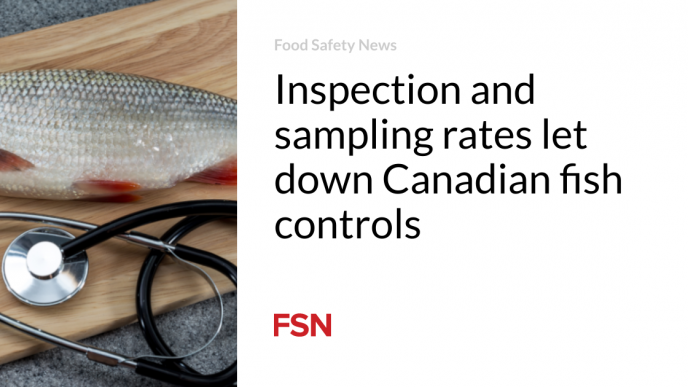All products are independently selected by our editors. If you buy something, we may earn an affiliate commission.
Finding a few flaky specs on your head isn’t anything out of the ordinary. But in your brow hairs? That might catch you off guard. Before you panic, eyebrow dandruff usually isn’t anything to worry about, Hope Mitchell, MD, board-certified dermatologist and founder of Mitchell Dermatology in Perrysburg, Ohio, tells SELF.
That said, it’s not exactly a one-size-fits-all diagnosis either. Rather, those little white or yellowish crumbs could be signs of a few different issues that deserve your attention, like dry skin craving moisture, for example, or an underlying condition leading to irritation or inflammation. Below, we asked dermatologists to break down all the possible causes of eyebrow dandruff—and more importantly, how to clear it up ASAP.
So what’s causing my eyebrow dandruff?
1. Seborrheic dermatitis
Colloquially, people often use “dandruff” as a catch-all term for any and all flakes. But according to Amy Freeman, MD, board-certified dermatologist at Schweiger Dermatology Group in Millburn, New Jersey, true “dandruff” technically refers to a mild form of seborrheic dermatitis, an inflammatory skin disorder that affects hair-bearing areas packed with oil glands—most commonly, your scalp. But it can also be the reason you’re shedding on your face too.
No matter where it shows up, Dr. Freeman tells SELF the underlying cause of seborrheic dermatitis is the same: An overgrowth of Malassezia yeast that feeds on oils. That explains why you’re more likely to notice distinctively greasy, scaly, sometimes itchy patches in isolated spots full of sebaceous glands, like your brows, underarms, and even your beard.
Now, there are a few clues that can help you figure out if seborrheic dermatitis (and not another culprit on this list) is to blame. For one, actual dandruff flakes are typically oily and localized instead of dry and widespread, Dr. Freeman points out. And in more severe cases, “you may also experience additional telltale symptoms like redness (in lighter skin tones) and inflammation,” she adds. Also, because the yeast thrives in moist, sebum-rich environments, piling on extra creams and lotions would probably make an SD flare-up even worse.
2. Regular ol’ dryness
Technically, those frosty bits in your brows might not be dandruff (a.k.a. seborrheic dermatitis) at all. Instead, they could just be peeling, chapped, dry skin. And yes, there’s a subtle difference: Although both involve shedding, dryness occurs when there’s a lack of moisture and usually can be soothed with hydrating products. Dandruff, on the other hand, is caused by excess oil—which Dr. Mitchell notes can be triggered by factors like hormonal fluctuations, seasonal shifts, and even dryness (since your body might overcompensate by producing more sebum).
According to Dr. Mitchell, experiencing powdery pieces in your brows is pretty common when cold weather hits or if your face tends to be on the thirstier side. On top of that, daily habits like wearing (and constantly removing) makeup can also strip hydration from the already thin, sensitive skin around your eyebrows, she adds. The same goes for certain skin care products (think harsh soaps, cleansers or exfoliants) that may irritate the area, leading to those sandpapery patches you know and loathe.
3. Contact dermatitis
Maybe you just started using a new brow gel or serum and next thing you know, you’ve got a rash and some flaky skin. That’s a pretty good clue you might be dealing with another type of eczema called contact dermatitis, says Dr. Freeman.
Unlike atopic (or more generalized and chronic) eczema, which would affect the rest of your face and body, contact dermatitis is a more localized, situational reaction to a product that, you guessed it, came in contact with your skin. In the case of irritant contact dermatitis, you’d experience dryness and cracking pretty soon after an irritant (typically a chemical) penetrates your skin’s protective top layer, Dr. Freeman explains. There’s also the classic allergic reaction, your immune system’s response to a perceived threat (or allergen) that involves inflammation, swelling, and possibly blisters—usually showing up a day or two after exposure.
In either case, your best move is to stop using any suspected culprits or new additions to your routine ASAP and give the affected area time to heal. Unless you’re experiencing symptoms like a rapid pulse, swollen tongue, or trouble breathing—which could indicate a life-threatening reaction called anaphylaxis—those crusty bits should start to resolve. (In the event of a severe reaction, don’t wait for it to get better. Call 911, your local emergency number, or head to urgent care ASAP.)
4. Psoriasis
This autoimmune skin condition can cause inflamed, mildly itchy, and scaly lesions—and your brows are no exception. Here, psoriasis would look like well-defined reddish-pink patches with silvery white scales on fairer skin, and violet-brown patches with grayish scales on deeper tones, according to Dr. Freeman. Another key giveaway is that these troublesome spots tend to appear in other areas of the body too, she adds, like your knees and elbows.
Unless you’re a dermatologist though, it can be tough to distinguish everyday dryness from a chronic condition you didn’t even know existed. So, here’s a general rule from both derms: Powdery flakes usually point to dry skin, while greasy, yellowish scales lean toward seborrheic dermatitis. Still, it’s always a good idea to check in with an actual professional for a more accurate diagnosis.
How to treat eyebrow dandruff
When it comes to clearing up your eyebrow dandruff, the right approach depends on what’s causing your shedding in the first place. With seborrheic dermatitis and psoriasis, for instance, you’d likely need prescription-strength topicals (like tacrolimus, ketoconazole, or hydrocortisone) to see real improvement.
That said, there are lots of home remedies and lifestyle tweaks worth trying first. A pretty simple one? “Avoid harsh scrubbing, as this can further aggravate the skin,” Dr. Mitchell says. The same goes for forcibly peeling off the crusty particles, tempting as it may be—this could lead to pigment problems like lingering dark spots. (For any pickers out there, here are a few pointers on how to break that bad habit.)
Instead, consider adding a chemical exfoliant into your routine once a week. Actives like salicylic acid and lactic acid can gently lift away dead skin cells without traumatizing an already sensitive region. Then, both derms recommend following that up with a moisturizer containing soothing all-stars like hyaluronic acid, glycerin, and ceramides, or an occlusive like petroleum jelly to protect and lock hydration into your irritated skin. Though if this isn’t helping, that’s a pretty solid sign you’re dealing with something beyond just winter dryness.
Another option to try before jumping to heavy-duty prescriptions: “Use an over-the-counter anti-dandruff shampoo as a face mask or cleanser,” Dr. Freeman suggests. This might sound weird, but studies have shown these products contain antifungal actives (namely, ketoconazole, zinc pyrithione, and selenium sulfide) known to fight dandruff-causing yeast—an especially effective solution if seborrheic dermatitis is what you’re stuck with. “Just lather the medicated shampoo in your eyebrows, leave it on for a few minutes, then rinse it off,” she adds. Oh, and make sure to follow up with a moisturizer of your choice—these yeast-fighting shampoos are potent but also a bit drying.
Head & Shoulders Clinical Strength Anti-Dandruff Shampoo
Nizoral Anti-Dandruff Shampoo with 1% Ketoconazole
If these treatment options aren’t bringing your flaky brows any relief—or things only seem to be getting worse—it might be time to check in with a dermatologist. Together you can come up with a personalized game plan to get things under control and soothe those flare-ups for good.
Related:
- Can Rogaine Help My Overplucked Eyebrows Grow Back?
- Should You Use Coconut Oil for Your Skin? Well, It Depends
- The Best Hair Loss Treatments for Women, According to Dermatologists
Get more of SELF’s science-backed skin care tips delivered right to your inbox—for free.














